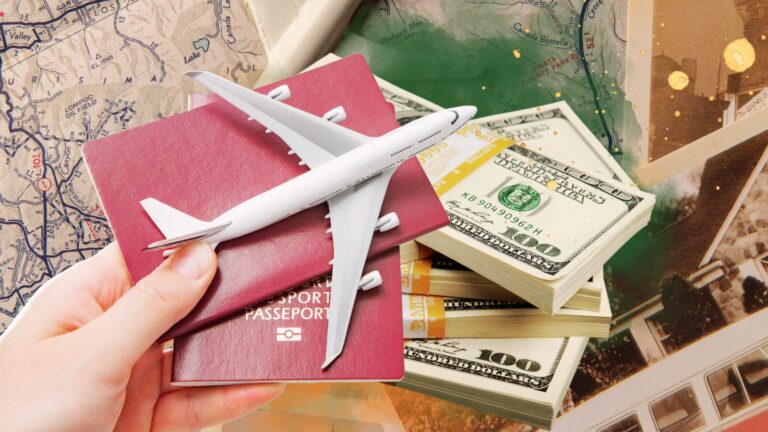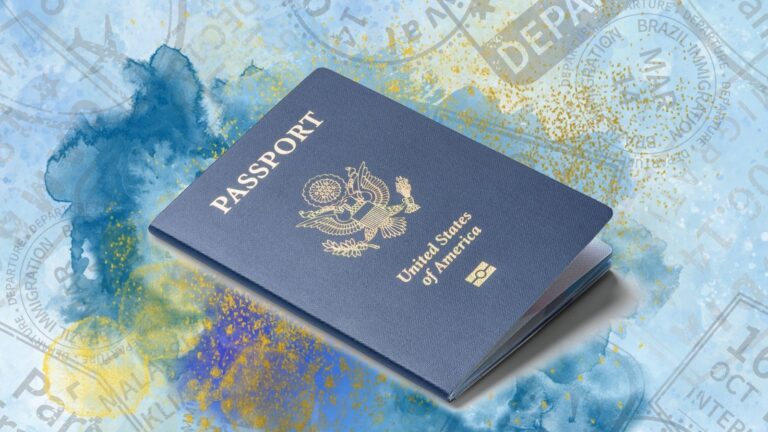How to Avoid Tourist Traps When Traveling to Popular Locations
When you’re planning a trip it’s easy to get caught up in the excitement of visiting famous landmarks and popular attractions. However, some of these well-known spots are notorious for being tourist traps.
A tourist trap is a place that attracts tons of visitors but often offers overpriced goods, crowded spaces, and less-than-authentic experiences. Maybe they originally were something interesting and unique, but they’ve become tourist traps because the systems set up around them are aimed at encouraging tourists to spend as much money as possible.
You’ll sometimes also get funneled into tourist trap places on day tours– like when your tour bus stops at a pearl farm for no reason other than to try to sell you cheap crap.
That said, knowing how to navigate these intensely touristic areas with as little stress as possible will make your travel experiences much more enjoyable.
In this post, I’ll go into what exactly makes a tourist trap and provide you with tips on how to avoid falling into them. Or at the very least, I’ll show you how to make the most of your visit if you find yourself in a tourist trap with no other options.
Just Gone Wandering is supported by readers! This post contains affiliate links. If you click on a link and buy something, I get a small percentage at no extra cost to you. Your support helps keep this blog running— thank you! Read full disclosure here.
What is a Tourist Trap?
So, what exactly is a tourist trap?
In my experience, a tourist trap is a place that lures in visitors with the promise of a unique or iconic experience but ends up being more about making money than providing genuine value.
These spots are often characterized by overpriced souvenirs, crowded and overly commercialized areas, and low-quality products or experiences. Everything is set up to funnel you into spending as much as possible and get you through it quickly to the next thing (where you’ll also spend money).
Tourist traps tend to offer flashy attractions that look great in photos, but can leave you feeling underwhelmed. Think of places where you see countless souvenir shops selling the same crap magnets, keychains and postcards at inflated prices.
Some people also consider over-hyped major tourist sites to be tourist traps, because the expectation is untouched beauty and the reality is a crowded mess. This could be important historical sites that just get hundreds or thousands of visitors a day, so even if it’s still a beautiful location you’re shoulder to shoulder with strangers all trying to see the same few bits.
Personally, I find these places very stressful because I HATE crowds and people chasing me around trying to get me to buy cheap souvenirs. While I want to see beautiful places, I don’t want to be surrounded by 300 people all trying to see them, too.
5 Examples of Popular Tourist Traps
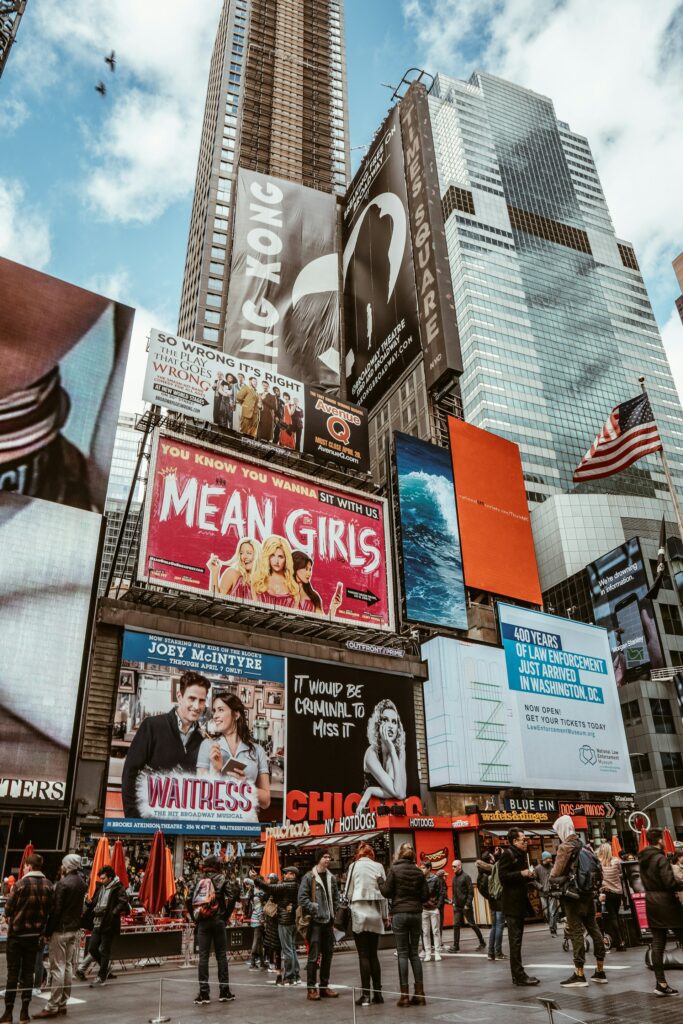
This is just to give you an example of what I mean by “tourist trap.” They’re popular tourist destinations but they have little value beyond checking something off your must-see list.
- Times Square, New York City
Times Square is a dazzling hub of neon lights and giant billboards, but it’s also filled with overpriced restaurants, horrible tourist shops and overwhelming crowds. Locals never go here if they can help it, which should be another clue. - Hollywood Walk of Fame, Los Angeles
The Hollywood Walk of Fame draws many tourists eager to see celebrity stars, but the area is often crowded and filled with pushy street vendors. The overall experience is underwhelming compared to the glam-and-glitz expectations. - The Leaning Tower of Pisa, Italy
While the Leaning Tower of Pisa is an iconic landmark, and in itself is not a tourist trap. Everything surrounding it, though? Yeah, problematic. Major crowds from tour groups make it hard to appreciate the Tower itself– plus having to dodge pickpockets and pushy vendors. - Santorini, Greece
Santorini’s stunning views attract thousands of visitors each year, leading to crowded streets and high prices. Everyone comes to do Instagram photo shoots and “the perfect shot,” but it means the island doesn’t feel as authentically Greek as other places. - Las Vegas Strip, Nevada
The Las Vegas Strip is famous for its vibrant nightlife and casinos, but it’s also notorious for expensive attractions and crowded sidewalks (and drunk tourists). If you want to do anything but lose money, don’t come here.
Tips on How to Avoid Tourist Traps
So how do you know which places are tourist traps, anyway? And how to avoid them?
1. Do Your Research
First, do some research.
Before visiting a destination, I make sure to read reviews on platforms like TripAdvisor and travel blogs for personal insights from real people. Bonus: I usually get some great tips on lesser-known locations that I might not have known about!
Checking local forums, such as Reddit or city-specific Facebook groups, means getting insider tips from residents and expats who know the area best. They recommend authentic experiences and warn you about tourist traps, and you’ll get up-to-date info on entrance fees, common scams, and so on.
Related: 90+ Active Facebook Groups for Travelers
Finally, reputable guidebooks and travel apps like Lonely Planet or Rick Steves give valuable advice on what to see and what to skip. They’re a little more corporate than the first two sources, but they often include sections on avoiding common tourist pitfalls in an easy-to-read format.
2. Visit Lesser-Known Attractions

This is the best way to avoid overcrowded places: go where the crowds are not!
Instead of sticking to famous landmarks, look for nearby places with similar features but less (foreign) tourists. Many temples in Japan, for instance, barely have any visitors and they’re right next to the more famous ones. Maybe they have smaller buildings, or different style of painting, but they’re just as interesting and unique as the bigger places.
Some places get lots of tourists, but they’re all LOCALS. Locals can provide great suggestions for unique and enjoyable sites that aren’t overrun. If you’re staying at a hostel, asking the front desk for recommendations (if it’s staffed by a local) is a great way to get some insider info. Or check the city-specific Facebook groups!
And finally, specialized tours, such as food tours or historical walks in specific neighborhoods, often include visits to lesser-known places. These tours can provide a deeper understanding of the area without the tourist trap vibe.
Example: The French Quarter walking tour I went on in Hanoi took us to interesting and un-crowded places I wouldn’t have gone to on my own. I also learned a lot about the history of Vietnam from the tour guide!
I use GuruWalk to find walking tours around the world, and Get Your Guide has some nice tours as well.
3. Travel During Off-Peak Times
Another major key to avoiding crowds (and saving money): traveling during off-peak season!
Do some research before you book anything on when the high tourist season is vs. low tourist season. Many places close down entirely during the off season and you don’t want to be stuck without any activities or guides.
Depending on how independent you are, you may want to aim for shoulder season, the time right before and right after high season. Fewer tourists, but not totally empty so there’s still some support should you need it.
Another way to avoid crowds is by arriving at popular spots early in the morning or later in the evening. That’s how so many Instagrammers get amazing selfies at famous spots with barely any people: they get there super early, before anybody else. Usually that means getting your own transportation vs. going on a group tour, but if you really want a peaceful visit then it’s the only way to do it.
You’ll also want to double-check the local calendar for major events or festivals. This can help in avoiding unexpected crowds and expenses since it’ll be locals traveling. For instance, Golden Week in Japan is a VERY expensive (and crowded) time to travel because all the locals are on break and roaming around the country. Same with the Lunar New Year in various Asian countries– though you might want to participate in some activities for that because it’s super fun!
Making the Most of a Tourist Trap Visit
Okay, so you want to go somewhere and you’re pretty sure it’s a tourist trap, but maybe it’s an important historical site that you just HAVE to visit. What do you do?
Plan Ahead
Research the Best Times to Visit: Early mornings or late afternoons are often less crowded, as tour groups tend to show up in the middle of the day. If you can find some tour group itineraries and figure out when they arrive at a specific location, plan to go BEFORE they get there.
Buy Tickets in Advance: Purchasing tickets online ahead of time can save you from waiting in long lines. Many attractions offer skip-the-line tickets that can significantly reduce waiting times, especially in Europe. Klook is a good place to look for these tickets.
Bring Snacks and Water: Carrying your own snacks and a water bottle can save you from paying inflated prices at tourist trap food stalls. Save that money for other stuff!
Focus on the Experience
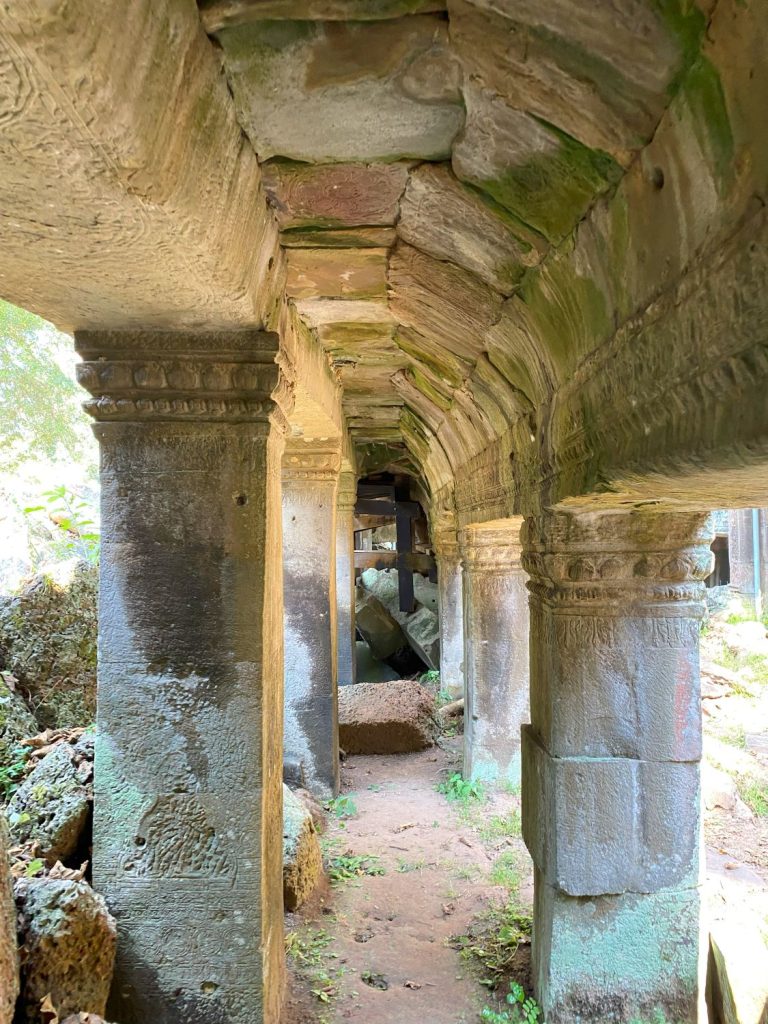
Take Photos: Finding interesting angles or less crowded spots can make for great photos. After getting the popular shot that everybody always takes, wander somewhere else and find something cool to photograph that other people may not notice.
Learn the History: Taking time to learn about the history and significance of the tourist trap adds depth to the visit. Sometimes tour guides in big groups aren’t the best at this, so if you can go by yourself and hire a tour guide on your own, you’ll have a better experience. Viator is a good place to find private tour guides, if there aren’t any provided by the place you’re going to.
Participate in Local Activities: Joining in local activities, such as traditional performances or community events, can provide a more authentic experience. It’s a great way to connect with the culture and people of the area, even in touristy places.
Final Thoughts
Dealing with tourist traps can be challenging, but with a little preparation and the right mindset, they can still offer memorable experiences. With careful planning, there are ways to turn even the most commercialized destinations into enjoyable visits. I hope these tips help you on your next trip!
Have you encountered any tourist traps that surprised you? Share your experiences in the comments below!
Save to Pinterest
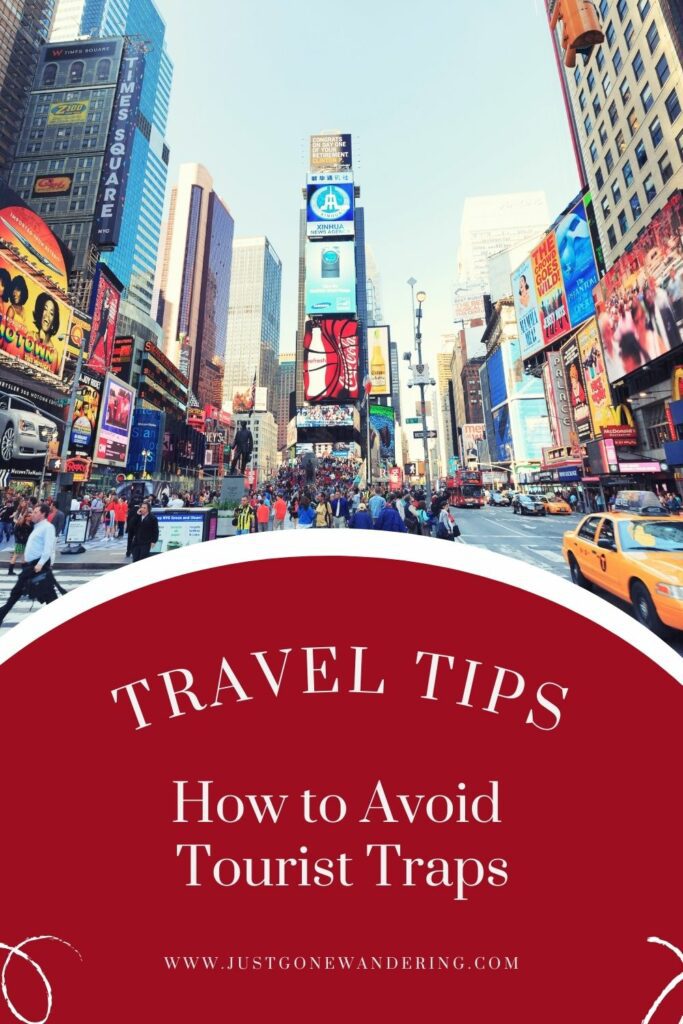
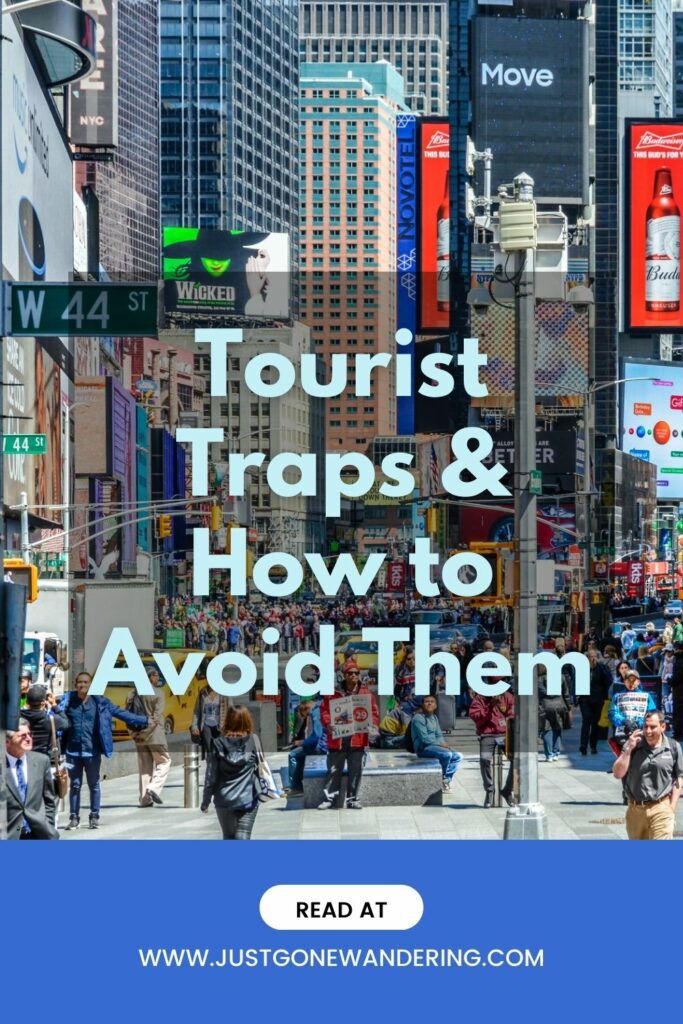
Explore More
Destination Travel Guides
Nomad Living
- How to Plan a Year of Full-time Travel
- Packing List for Perpetual Travel (Solo Female Cozy Budget Style)
- Backpack vs. Suitcase for Long-Term Travel
- How to keep in contact while traveling abroad
- The BEST WhatsApp Travel Group Chats
- 90+ Active Facebook Groups for Travelers
- Where to Stay Besides Hotels When Traveling Long-Term
- Travel kitchen essentials | Hotel cooking
- Best Resources for Long-Term Travel
Best Travel Resources
- 👩💻Stay organized with the Deluxe Travel Planner Spreadsheet
- 🛌Search Hostelworld for budget stays
- ✈️Search SkyScanner for discounted flights around the world
- 😺Join TrustedHousesitters and do petsitting in exchange for accommodation
- 💳Carry Chase Sapphire Preferred for a travel-friendly credit card
- 📱Use Airalo for eSIMs around the world
- 🚙Check DiscoverCars for international car rentals
- 👩💻Snag ExpressVPN to stay safe while browsing the web
- 🧑⚕️Sign up with VisitorsCoverage for trip insurance


